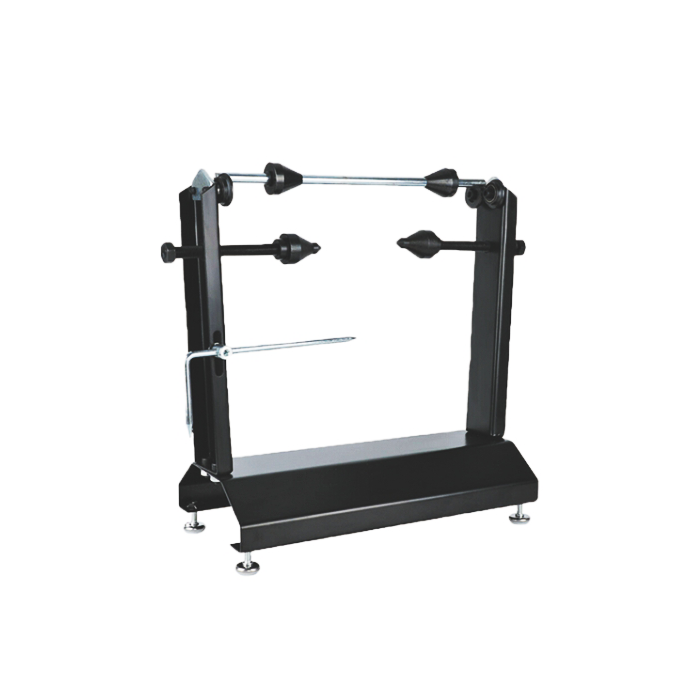The Importance of Wheel Truing and Its Impact on Motorcycle Performance
Understanding Wheel Trueness and Its Effects
Wheel trueness refers to the accuracy of a wheel's shape and alignment. A perfectly true wheel rotates without any wobble or deviation from its intended path. However, various factors can cause wheels to become untrue over time, including impacts from road hazards, uneven spoke tension, and normal wear and tear. In addition to compromising control and increasing tyre wear, riding on untrue wheels might pose safety risks.
How Precise Alignment Affects Ride Quality
When your motorcycle's wheels are properly aligned, you'll experience a smoother, more stable ride. Wheels that are precisely aligned reduce vibration, which improves rider comfort and reduces stress on other motorcycle components. This is especially important when riding in bad weather or corners, as it optimises the contact patch between your tires and the road surface, leading to improved traction and handling.
The Role of a Truing Stand in Maintenance
An essential item for professional mechanics and ardent do-it-yourself fans alike is a motorcycle truing stand. For accurate measurements and controlled adjustments, it offers a sturdy platform for inspecting and adjusting wheels. You can avoid more serious alignment issues in the future by using a truing stand as part of your routine maintenance to detect and correct problems early. Taking preventative measures like these can make your wheels, tires, and other components last much longer, which saves you money and hassle in the end.
Step-by-Step Guide to Using a Motorcycle Truing Stand
Preparing Your Workspace and Tools
Before diving into the truing process, it's crucial to set up a clean, well-lit workspace. Gather all necessary tools, including your motorcycle truing stand, a spoke wrench, a dial indicator, and a notepad for recording measurements. Ensure your work area is free from distractions and has enough space for you to move around the stand comfortably. If possible, position a bright light source directly above your work area to help you spot even minor imperfections in wheel alignment.
Mounting the Wheel on the Truing Stand
Carefully remove the wheel from your motorcycle, following the manufacturer's guidelines. Clean the wheel thoroughly, paying special attention to the hub and axle areas. Place the wheel onto the motorcycle truing stand, ensuring it's securely fastened and centered. Most truing stands feature adjustable arms or cones that adapt to various wheel sizes. Take your time with this step, as proper mounting is crucial for accurate measurements and adjustments. Once mounted, give the wheel a gentle spin to confirm it rotates freely without any binding or resistance.
Measuring and Adjusting for Precise Alignment
With the wheel properly mounted, it's time to begin the truing process. Start by slowly rotating the wheel and observing its movement. Use a dial indicator to measure both lateral (side-to-side) and radial (up-and-down) runout. Record these measurements at several points around the wheel. Identify areas with the greatest deviation and begin making adjustments to the spoke tension. Use your spoke wrench to tighten or loosen spokes as needed, working in small increments. After each adjustment, re-spin the wheel and take new measurements. This process requires patience and precision, as over-adjusting can lead to new alignment issues. Continue this cycle of measuring and adjusting until you achieve the desired level of trueness, typically within 1-2mm of runout or less for optimal performance.
Advanced Techniques and Tips for Optimal Wheel Truing
Understanding Spoke Patterns and Tension Balance
Mastering wheel truing goes beyond simply tightening loose spokes. It's essential to understand the intricate relationship between spoke patterns and overall wheel stability. Most motorcycle wheels feature a cross-spoke pattern, where spokes intersect to provide optimal strength and flexibility. When truing a wheel, pay attention to the tension balance across all spokes. Uneven tension can lead to stress points and premature spoke failure. Use a spoke tension meter to ensure consistent tension throughout the wheel. Remember that achieving perfect spoke tension is as crucial as correcting lateral and radial runout for long-lasting wheel performance.
Dealing with Stubborn Misalignments
Sometimes, you may encounter wheels with persistent misalignments that seem resistant to standard truing techniques. In these cases, it's important to investigate the root cause. Check for bent rims, damaged spokes, or worn hub bearings. If the rim is slightly bent, you may be able to carefully realign it using the motorcycle truing stand and gentle pressure. However, severe bends or structural damage may require rim replacement. For stubborn lateral runout, try the "stress relieving" technique: apply pressure to the high spots while the wheel is mounted on the stand, then re-true. This can help overcome spoke wind-up and achieve better alignment. Always prioritize safety – if you're unsure about a wheel's integrity, consult a professional.
Maintaining Wheel Alignment Over Time
Achieving perfect wheel alignment is only half the battle; maintaining it is equally important. Implement a regular inspection and maintenance schedule to catch alignment issues early. After each ride, especially those involving rough terrain or impacts, visually inspect your wheels for any signs of damage or misalignment. Periodically check spoke tension and make minor adjustments as needed. Consider investing in a portable truing stand for on-the-go maintenance during long trips or off-road adventures. By staying proactive with wheel maintenance, you'll ensure consistent performance, improved safety, and extended longevity of your motorcycle's wheels and related components.
Conclusion
Improving your riding and bike maintenance can be achieved by becoming an adept with a motorcycle truing stand. Accomplishing and maintaining exact wheel alignment is within your reach when you follow the instructions in this guide and make use of advanced approaches. Keep in mind that truing wheels is an art and a science that demands persistence, focus, and the capacity to learn from mistakes. As you pick up encounter, you'll learn the ins and outs of your motorcycle's wheels, which will increment your control, security, and the bike's life expectancy.
Contact Us
Ready to elevate your motorcycle maintenance game? For more information about our high-quality motorcycle truing stands and other essential tools, don't hesitate to reach out to us at info@runva.com.cn. Let's work together to keep your wheels perfectly aligned and your rides smooth and safe!

_1737625693698.webp)


